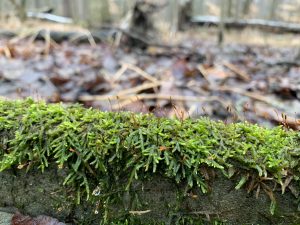Our trek through Brown’s Bog was a welcome and peaceful break from the hectic pre-spring break rush. Although many bemoan the dreary weather, I think it added to the serenity of the bog. This introspective feeling was heightened by the boardwalk weaving through the woods. Unlike the walk at Johnson Woods, this boardwalk was narrow, making it impossible to walk next to anyone.
This tranquility was stymied somewhat by a nagging fear in the back of my mind: poison sumac. I’m a veteran poison ivy contractor, and from what Professor Bourne said, sumac is several times worse. Upon further investigation, the unpleasant reaction sumac has with skin is because of the compound urushiol, which bind to proteins in the skin. This triggers an immune response— the cells that adhered to the foreigner are killed by the immune system, which creates those characteristic red and oozing welts. Interestingly, not all sumac varieties trigger such a response— others have been used in dyes, as medicine, and even to flavor beverages. Once again, Heraclitus’ duality makes itself known, because, as Hannah described in class, sumac can be both what it is (an irritant that causes cell death) and what it is not (a medicine to cure various ailments).

